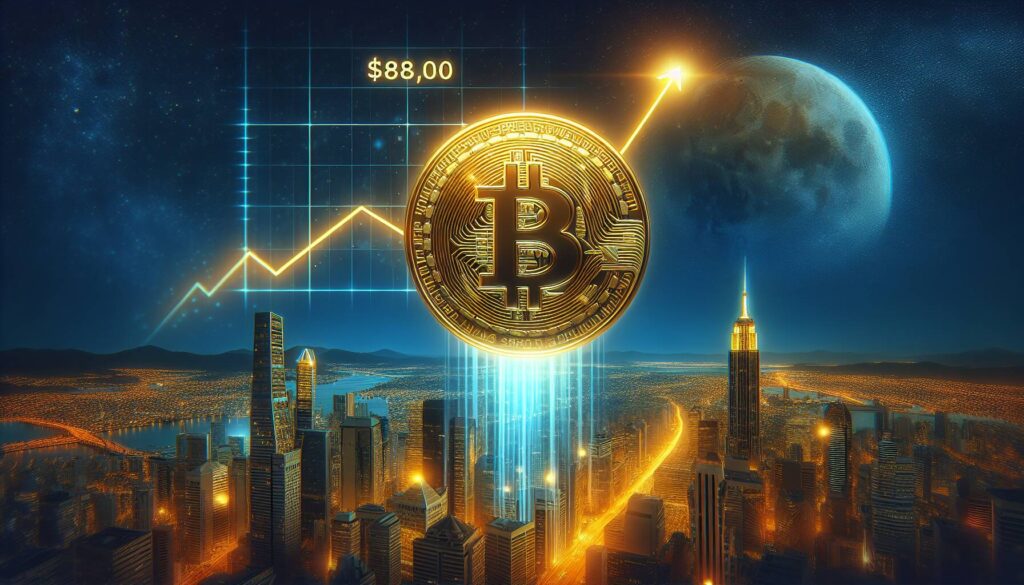In a whirlwind week for the cryptocurrency industry, the new Trump Administration has been setting a distinctly pro-crypto tone, hinting at a shift in regulatory and policy landscapes. At the heart of the news, Ripple has been making headlines with significant developments, including Ondo Finance’s announcement of tokenized treasuries on Ripple’s XRP Ledger. These innovations aim to boost liquidity for Ripple’s dollar-pegged stablecoin, RLUSD, as CEO Brad Garlinghouse advocates for XRP’s inclusion in potential national crypto reserves, stirring some debate among Bitcoin proponents who favor a more Bitcoin-centric reserve approach.
Meanwhile, Cardano has introduced a hard fork called “Plomin,” which paves the way for decentralized governance, and Avalanche has reported a remarkable 75% reduction in transaction costs following its latest upgrade—both big wins for their respective communities. In other positive news, Movement Labs is on the cusp of launching its developer mainnet, creating excitement ahead of a significant Layer 1 launch scheduled for February.
The stablecoin sector has also been thriving, surpassing a 0 million market cap as Tether, the issuer of USDT, disclosed a staggering billion profit for 2024, positioning itself for further investments. On the regulatory front, Howard Lutnick, tapped for Commerce Secretary, defended his firm’s custodial partner, Tether, during a recent Senate hearing, illustrating the growing intersection of government and cryptocurrency.
In exchange-traded funds, Bitwise recently gained SEC approval for a combined bitcoin-ether ETF and has filed for a dogecoin ETF, showcasing rising institutional interest in digital assets. Additionally, Grayscale is broadening investor access with a new closed-end fund trust focusing on dogecoin, a memecoin that has surprisingly emerged as a tool for financial inclusion globally.
However, not all news is favorable. Solana’s Pump.fun is facing a class-action lawsuit, prompting concerns over regulatory compliance, while French authorities are intensifying an investigation into Binance related to money laundering and tax issues. Meanwhile, the crypto community grapples with the recent familial endeavors of disgraced FTX founder Sam Bankman-Fried, whose parents are reportedly exploring the possibility of seeking a presidential pardon, drawing parallels to past high-profile cases but facing complex legal challenges.
As the crypto landscape evolves, industry players and enthusiasts are keenly observing these significant developments, setting the stage for what promises to be an engaging shift in the sector as it pushes into 2024.

Key Highlights from the Latest CoinDesk Update
The recent developments in the cryptocurrency industry depict an evolving landscape influenced by regulatory shifts, technological advancements, and market dynamics. Here are the key points to consider:
- Pro-Crypto Agenda Under the Trump Administration:
- The administration’s support may lead to increased legitimacy and growth opportunities for cryptocurrencies.
- Ripple’s Innovations:
- Ondo Finance’s tokenized treasuries on Ripple’s XRP Ledger promise enhanced liquidity.
- Clawback features for the stablecoin RLUSD support efficient asset management.
- Ripple’s CEO advocates for XRP to be part of a national crypto reserve, initiating debate in the community.
- Cardano and Avalanche Updates:
- Cardano’s hard fork allows for decentralized governance, fostering community engagement.
- Avalanche’s upgrade reduced transaction costs significantly, making the platform more user-friendly.
- Growth of Stablecoins:
- The stablecoin market surpassed a 0 million market cap, signifying increased adoption.
- Tether reported substantial profits, indicating strong financial health for future investments.
- MicroStrategy’s Continued Investment:
- Further accumulation of Bitcoin indicates confidence in the asset as a long-term investment.
- ETF Developments:
- Bitwise’s SEC-approved bitcoin-ether ETF and application for a dogecoin ETF highlight the growing institutional interest in crypto.
- Grayscale’s fund for dogecoin positions the memecoin as a viable investment asset.
- Regulatory Landscape:
- Legal challenges, such as the class-action lawsuit against Pump.fun, indicate increasing scrutiny in the sector.
- Binance facing probes by French authorities raises concerns about compliance in the global market.
- Calls for tokenized equity from influential leaders may reshape traditional finance and investment models.
- Ongoing Controversies:
- The prospect of a presidential pardon for Sam Bankman-Fried reflects the blurred lines in crypto regulation and accountability.
As the crypto landscape evolves, staying informed on regulatory changes, technological advancements, and market trends is crucial for investors and enthusiasts alike.
Ripple Takes Center Stage Amidst Pro-Crypto Developments
This week, CoinDesk showcased a whirlwind of activity in the crypto industry, prominently featuring Ripple, which seems to be at the helm of several significant developments. The introduction of tokenized treasuries on Ripple’s XRP Ledger by Ondo Finance is a game-changing move that aims to enhance the functionality and appeal of the platform. Furthermore, the incorporation of clawback features for Ripple’s stablecoin, RLUSD, positions Ripple as a forward-thinking player in liquidity management, making it more attractive for institutional investors. This proactive approach could serve as a substantial competitive edge over platforms like Ethereum and Solana, which have yet to implement similar mechanisms.
On the flip side, Ripple’s push for USD reserves could stir dissent among staunch Bitcoin advocates. By advocating for XRP inclusion, Garlinghouse risks alienating a segment of the crypto community that prizes Bitcoin’s first-mover advantage. This tension could potentially hinder Ripple’s broader acceptance, especially within communities loyal to decentralized principles. For those in the crypto sphere ingrained in the ideals of decentralization and limited government involvement, Ripple’s strategies may present a troubling departure from their core values.
In conjunction with Ripple’s activities, other platforms are making strides that could overshadow Ripple’s moment in the spotlight. For instance, Cardano’s hard fork and Avalanche’s upgrade draw attention to decentralized governance and cost efficiency. These enhancements may attract users looking for alternatives to Ripple for their decentralized finance needs. Furthermore, the SEC approval for Bitwise’s bitcoin-ether ETF and Grayscale’s new fund offering access to dogecoin could significantly impact market dynamics, broadening investor options beyond Ripple’s ecosystem.
The ongoing regulatory scrutiny also looms large over the entire industry. With trading giants like Binance facing legal challenges and Solana’s Pump.fun embroiled in a class-action lawsuit, the regulatory landscape is as turbulent as ever. Players positioned well with compliance, like Ripple aiming for national reserves, could find themselves benefitting from partnerships with big firms and solid operational strategies. Conversely, those disregarding regulatory requirements might face debilitating setbacks, as seen with the FTX fallout which casts shadows over the entire sector.
As the crypto landscape evolves, Ripple and its contemporaries are at a crossroads. While Ripple’s strategic advancements could attract institutional interest, they also risk alienating passionate segments of the crypto community. Meanwhile, ongoing regulatory issues pose challenges that could hinder growth across the entire sector. For investors and users alike, choosing where to place their bets amidst these fluctuations will be crucial. The coming weeks promise to be equally dynamic, with new strategies and developments always on the horizon.

















